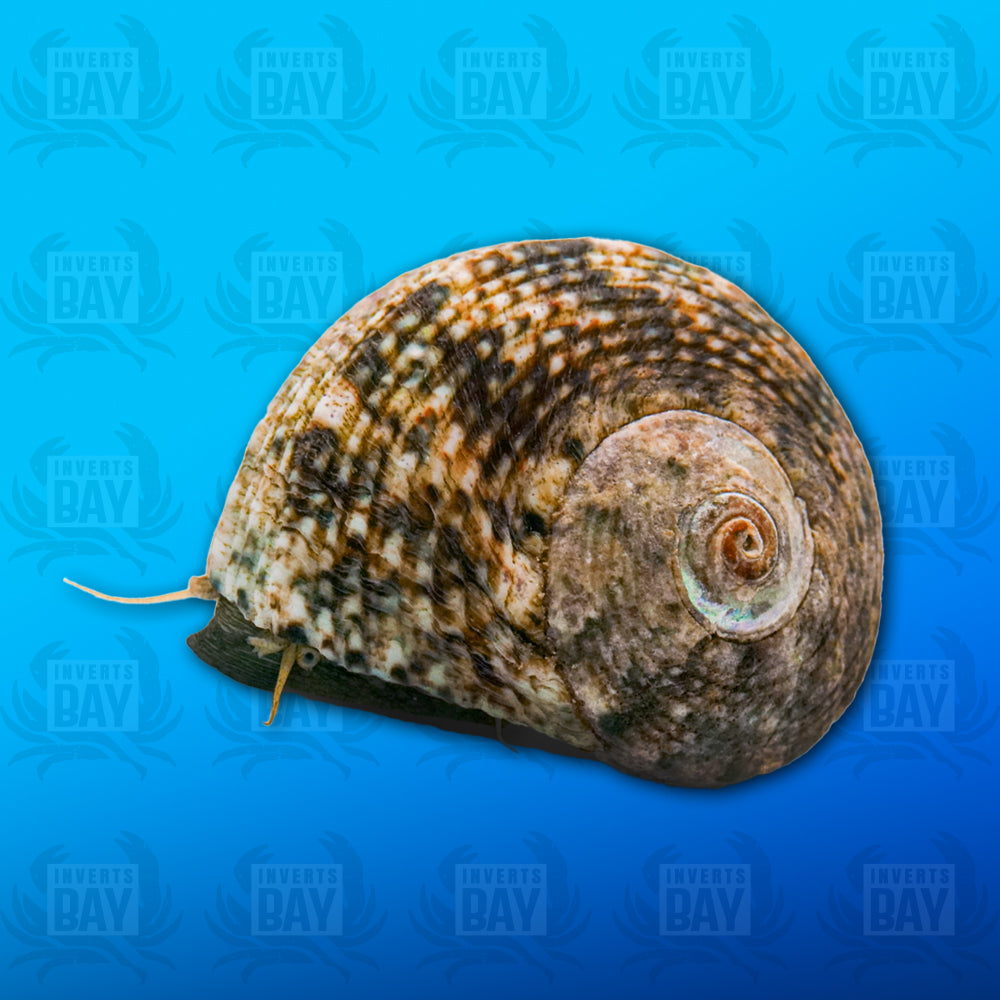(!) Online orders may be adjusted or canceled in the event of pricing errors or unavailable items.
1
/
of
1
Inverts Bay
Margarita snail
Margarita snail
Regular price
$4.00 CAD
Regular price
Sale price
$4.00 CAD
Unit price
/
per
Shipping calculated at checkout.
Couldn't load pickup availability
The Margarita Snail (Margarites pupillus) is a marine gastropod appreciated for its algae-grazing abilities, contributing to the cleanliness of marine aquariums.
Essential Information
- Common Names: Margarita Snail
- Scientific Name: Margarites pupillus
- Family: Trochidae
- Origin/Habitat: Native to the Eastern Pacific, particularly in cooler, temperate waters.
- Maximum Size: Typically grows up to 1 inch (2.5 cm) in diameter.
- Lifespan: In optimal conditions, they can live several years; however, in warmer aquariums, their lifespan may be significantly reduced.
- Level of Difficulty: Moderate; requires specific temperature conditions to thrive.
- Reef Safe: Yes; they are peaceful and do not harm corals or other reef inhabitants.
Appearance & Physical Traits
- Coloration & Pattern: Margarita Snails have a brown body and a smooth, turban-shaped shell.
- Body Shape & Structure: They possess a distinctive turban-shaped shell, which is smooth and can exhibit various subtle colorations.
Habitat & Environmental Needs
- Minimum Tank Size: A well-established aquarium of at least 10 gallons (38 liters) is recommended to provide adequate space and stable water conditions.
- Water Temperature: Prefer cooler temperatures, ideally between 50°F and 68°F (10°C to 20°C). They can tolerate temperatures up to 78°F (25.5°C), but prolonged exposure to warmer conditions can significantly reduce their lifespan.
- pH Level: Maintain between 8.0 and 8.4.
- Specific Gravity: Optimal range is 1.023 to 1.025.
- Aquascape: Provide ample live rock and a sandy substrate to offer grazing surfaces and hiding spots.
Diet & Feeding
- Diet Type: Herbivorous; primarily consumes various forms of algae.
- Preferred Foods: Feeds on diatoms, film algae, and other microalgae present on rocks and aquarium surfaces.
- Feeding Frequency: In a well-established aquarium with sufficient algae growth, they typically do not require supplemental feeding.
Behavior & Compatibility
- Temperament: Peaceful and non-aggressive; spends much of the day grazing on algae.
- Social Behavior: Compatible with a wide range of reef-safe fish and invertebrates.
- Tank Mate Compatibility: Avoid housing with aggressive predators that may prey on snails.
- Activity Level: Primarily active during nighttime hours.
Care Considerations & Additional Notes
- Ease of Care: Moderate; while they are effective algae grazers, their preference for cooler water temperatures makes them less suitable for typical tropical reef aquariums.
- Special Requirements: Due to their sensitivity to warmer temperatures, it's crucial to monitor and maintain appropriate water conditions. Rapid acclimation to warmer tanks can be detrimental.
- Breeding Info: Breeding in captivity is rare and not well-documented.
- Additional Notes: While they are beneficial algae grazers, their lifespan can be significantly shortened in tanks maintained at standard tropical temperatures. It's essential to consider their temperature requirements before adding them to an aquarium.
Share

